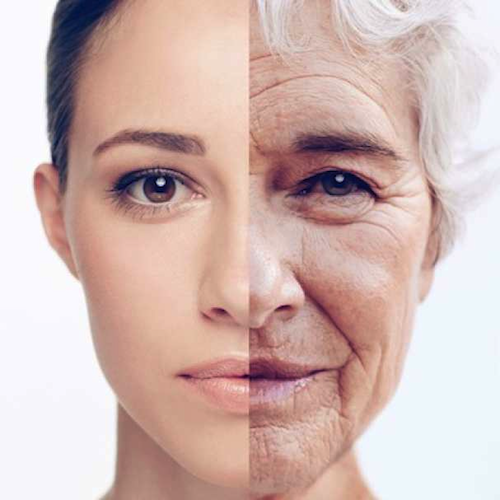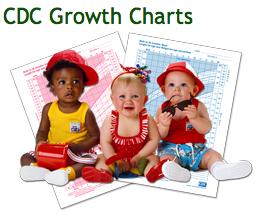|
|
Developmental Biology - Aging
Predicting Health & Life Span With Plasma
Stanford scientists can predict age by measuring the proteins in your blood...
The carnival worker who tries to guess your age relies on aspects of your appearance, such as your posture and whether any wrinkles emanate from the corners of your eyes and lips. If the carny's guess is more than a few years off, you win a stuffed koala.
But a team of Stanford University School of Medicine scientists doesn't need to know how you look to guess your age. Instead, it watches a kind of physiologic clock governed by the levels of 373 proteins circulating in your blood. If the clock is off, you don't win a plush toy - but you may find out important things about your health.
"We've known for a long time that measuring certain proteins in human blood can give information about a person's health status. But, it hasn't been appreciated how so many different protein levels, roughly a third of all the ones we looked at, change markedly with advancing age."
Tony Wyss-Coray PhD, Professor, Department of Neurology and Neurological Sciences; D. H. Chen Professor II and co-director the Stanford Alzheimer's Disease Research Center.
Changes in the levels of numerous proteins migrating from body tissues into circulating blood not only characterize, but quite possibly cause aging explains Wyss-Coray. His and his team's paper describing the research published Dec. 5 in Nature Medicine.
'Proteins are the workhorses'
Researchers analyzed plasma (the cell-free fluid in blood) from 4,263 people ages 18-95. Says Wyss-Coray: "Proteins are the workhorses of the body's constituent cells, and when their relative levels undergo substantial change, it means you've changed, too. Looking at thousands of proteins in plasma gives a snapshot of what's going on throughout the body."
Study results suggest physiologic aging does not proceed at a perfectly even pace, but charts a jerky trajectory around three distinct points in our human life cycle. Cresting on average at ages 34, 60 and 78.
Investigators built their clock model from looking at composite levels of proteins within groups - rather than from individuals. But the resulting formula proved able to predict an individual's age to within three years, most of the time. When it didn't, there was an interesting reason: those people whose predicted age was substantially lower than their actual age - were remarkably healthy for their actual age.
Researchers obtained their samples from two large studies. One known as the LonGenity study, has assembled a registry of exceptionally long-lived Ashkenazi Jews. It provided many blood samples from people as old as 95. On measuring the levels of roughly 3,000 proteins in each individual's plasma, the team identified 1,379 proteins where levels varied significantly with participants' age.
Divergence
A reduced set of 373 of those proteins was sufficient for predicting participants' ages with great accuracy. But there were cases of substantial divergence between some participants' chronologic and physiologic age. For example, some subjects in the LonGenity study had a genetic proclivity toward exceptionally good health in advanced old age.
"We had data on hand-grip strength and cognitive function for that group of people. Those with stronger hand grips and better measured cognition were estimated by our plasma-protein clock to be younger than they actually were."
Tony Wyss-Coray PhD
The study also strengthened the case that men and women, who were about equally represented in the study, age differently. Of the proteins the analysis found to change with age 895, or nearly two-thirds, were significantly more predictive for one sex than for the other.
"The differences were striking," says Wyss-Coray. This finding strongly supports the rationale for the National Institutes of Health's policy instituted in 2016, promoting increased inclusion of women in clinical trials and the demarcation of 'sex' as a biological variable.
Any clinical applications of the technique are a good five to 10 years off, says Wyss-Coray. With further validation, though, it could be used to identify individuals who appear to be aging rapidly, and therefore at risk for age-linked conditions such as Alzheimer's disease or cardiovascular disease. It could also be used to predict drug usage needs or elevate therapeutic interventions such as leafy green vegetables, to slow the aging process. Or conversely, flash an early warning of a drug's unanticipated tendency to accelerate aging.
"Ideally, you'd want to know how virtually anything you 'took' or 'did' affects your physiologic age," says Wyss-Coray.
Although the words "373 proteins" may conjure up the image of a transfusion-sized blood extraction, a drop of blood is all it takes for a 373-protein readout. In fact, a mere nine proteins may be enough to do the job.
"After nine or 10 proteins, adding more proteins to the clock only slightly improves its prediction accuracy. With machine learning, you could potentially make a test with good accuracy based on just nine proteins."
Tony Wyss-Coray PhD
Abstract
Aging is a predominant risk factor for several chronic diseases that limit healthspan1. Mechanisms of aging are thus increasingly recognized as potential therapeutic targets. Blood from young mice reverses aspects of aging and disease across multiple tissues2,3,4,5,6,7,8,9,10, which supports a hypothesis that age-related molecular changes in blood could provide new insights into age-related disease biology. We measured 2,925 plasma proteins from 4,263 young adults to nonagenarians (18–95 years old) and developed a new bioinformatics approach that uncovered marked non-linear alterations in the human plasma proteome with age. Waves of changes in the proteome in the fourth, seventh and eighth decades of life reflected distinct biological pathways and revealed differential associations with the genome and proteome of age-related diseases and phenotypic traits. This new approach to the study of aging led to the identification of unexpected signatures and pathways that might offer potential targets for age-related diseases.
Authors
Benoit Lehallier, David Gate, Nicholas Schaum, Tibor Nanasi, Song Eun Lee, Hanadie Yousef, Patricia Moran Losada, Daniela Berdnik, Andreas Keller, Joe Verghese, Sanish Sathyan, Claudio Franceschi, Sofiya Milman, Nir Barzilai and Tony Wyss-Coray.
Acknowledgments
The authors thank the members of the Wyss-Coray laboratory for feedback and support. We thank the clinical staff for human blood and plasma collection/coordination. We thank A. Butterworth for his help in getting access to the INTERVAL proteomics data. The AddNeuroMed data are from a public–private partnership supported by EFPIA companies and the European Union Sixth Framework program priority FP6-2004-LIFESCIHEALTH-5. Clinical leads responsible for data collection were I. K?oszewska (Lodz), S. Lovestone (London), P. Mecocci (Perugia), H. Soininen (Kuopio), M. Tsolaki (Thessaloniki) and B. Vellas (Toulouse); imaging leads were A. Simmons (London), L.O. Wahlund (Stockholm) and C. Spenger (Zurich); and bioinformatics leads were R. Dobson (London) and S. Newhouse (London). This work was supported by National Institutes of Health National Institute on Aging (NIA) F32 1F32AG055255 01A1 (D.G.), Hungarian Brain Research Program Grant No. 2017-1.2.1-NKP-2017-00002 (T.N.), the Fulbright Foreign Student Program (T.N.), the Cure Alzheimer’s Fund (T.W.-C.), Nan Fung Life Sciences (T.W.-C.), the NOMIS Foundation (T.W.-C.), the Stanford Brain Rejuvenation Project (an initiative of the Stanford Wu Tsai Neurosciences Institute), the Paul F. Glenn Center for Aging Research (T.W.-C.), NIA R01 AG04503 and DP1 AG053015 (T.W.-C.) and the NIA-funded Stanford Alzheimer’s Disease Research Center P50AG047366, NIA K23AG051148 (S.M.), R01AG061155 (S.M.), the American Federation for Aging Research (S.M.), R01AG044829 (J.V. and N.B.), NIA R01AG057909 (N.B.), the Nathan Shock Center of Excellence for the Basic Biology of Aging P30AG038072 (N.B.) and the Glenn Center for the Biology of Human Aging (N.B.).
Return to top of page.
| |
|
Dec 16 2019 Fetal Timeline Maternal Timeline News
 Waves of proteins change in our blood in our fourth, seventh and eighth decades of life. A new approach to studying aging led to identifying these protein signatures and might offer potential targets for age-related disease intervention. CREDIT Healthista. No copyright infringement intended.
|



